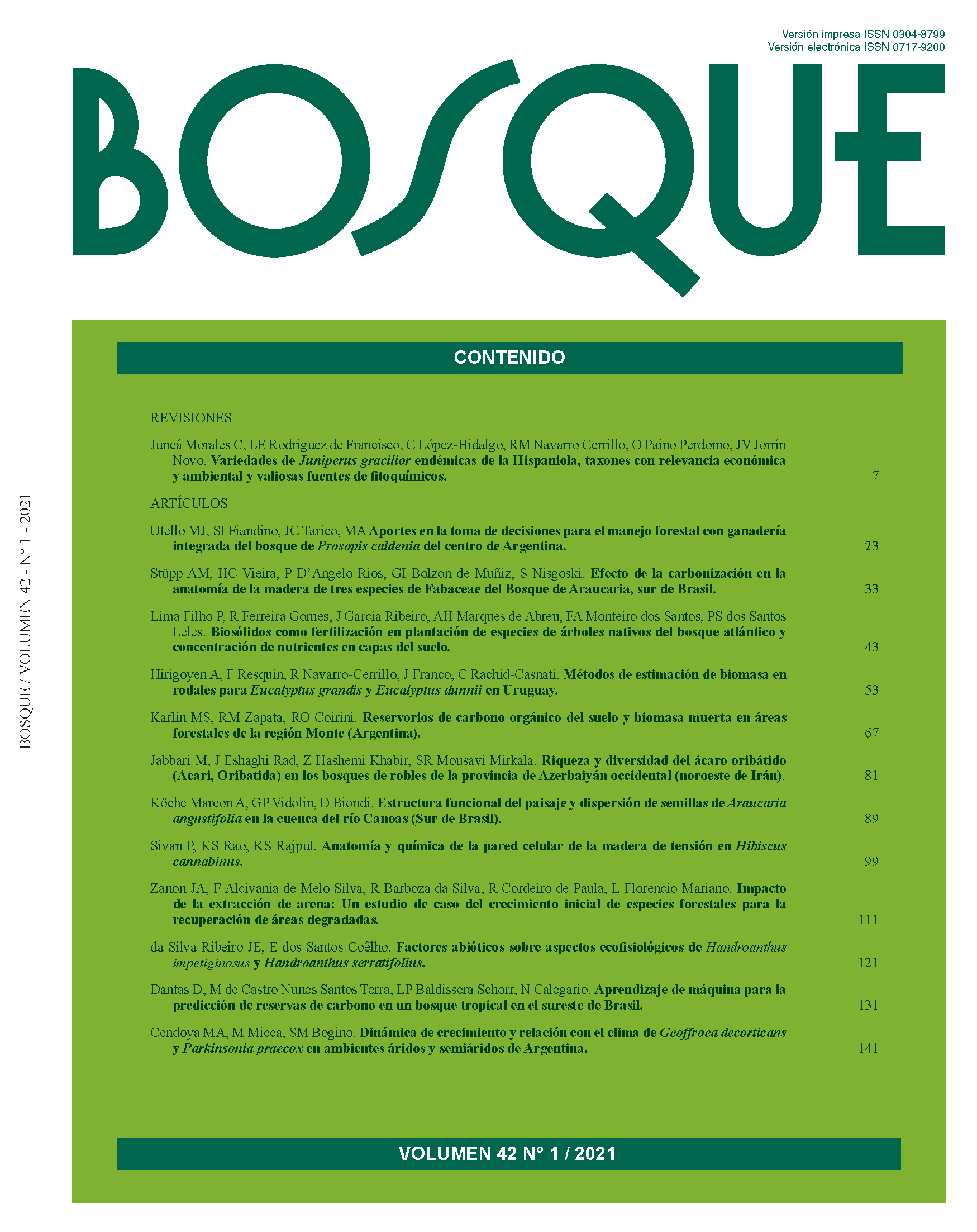Stand biomass estimation methods for Eucalyptus grandis and Eucalyptus dunnii in Uruguay
Main Article Content
Abstract
Biomass additivity is a desirable characteristic of a system of equations for predicting components and total biomass, since equations independently adjusted generate biologically inconsistent results. The aim of this study was to fit and compare three methods for modelling biomass: (i) total biomass individual regression, (ii) total biomass regression function calculated as the sum of separate biomass components, and (iii) simultaneous equations of biomass components based on Nonlinear Seemingly Unrelated Regression. A total of 208 trees of Eucalyptus dunnii and Eucalyptus grandis were harvested and destructively sampled to record above-ground biomass. Results indicate that a system of equations adjusted by simultaneous equations provides accurate biomass estimations, guaranteeing additivity. This model system showed good fit and good prediction performance, given that the correlation coefficient was higher than 97 % for total above-ground biomass, for both species; whereas root mean square error was 23.9 kg and 30.2 kg for E. grandis and E. dunnii, respectively. A system of biomass equations was developed for each eucalyptus species, such that the sum of the estimations of the biomass components equaled the estimate of above-ground biomass. Results showed that the systems of equations have high potential for improving the accuracy of individual tree above-ground biomass estimates for both species.

